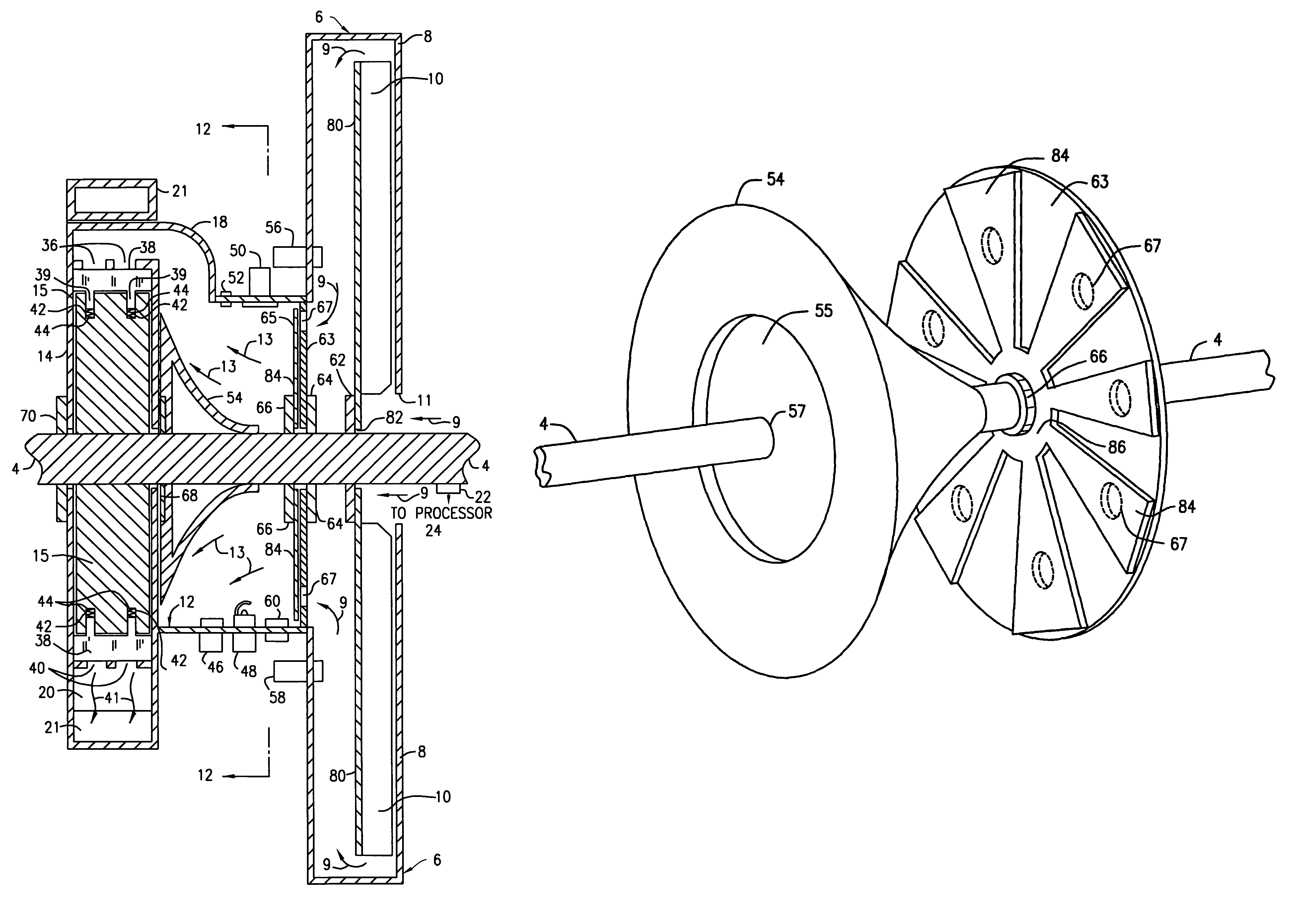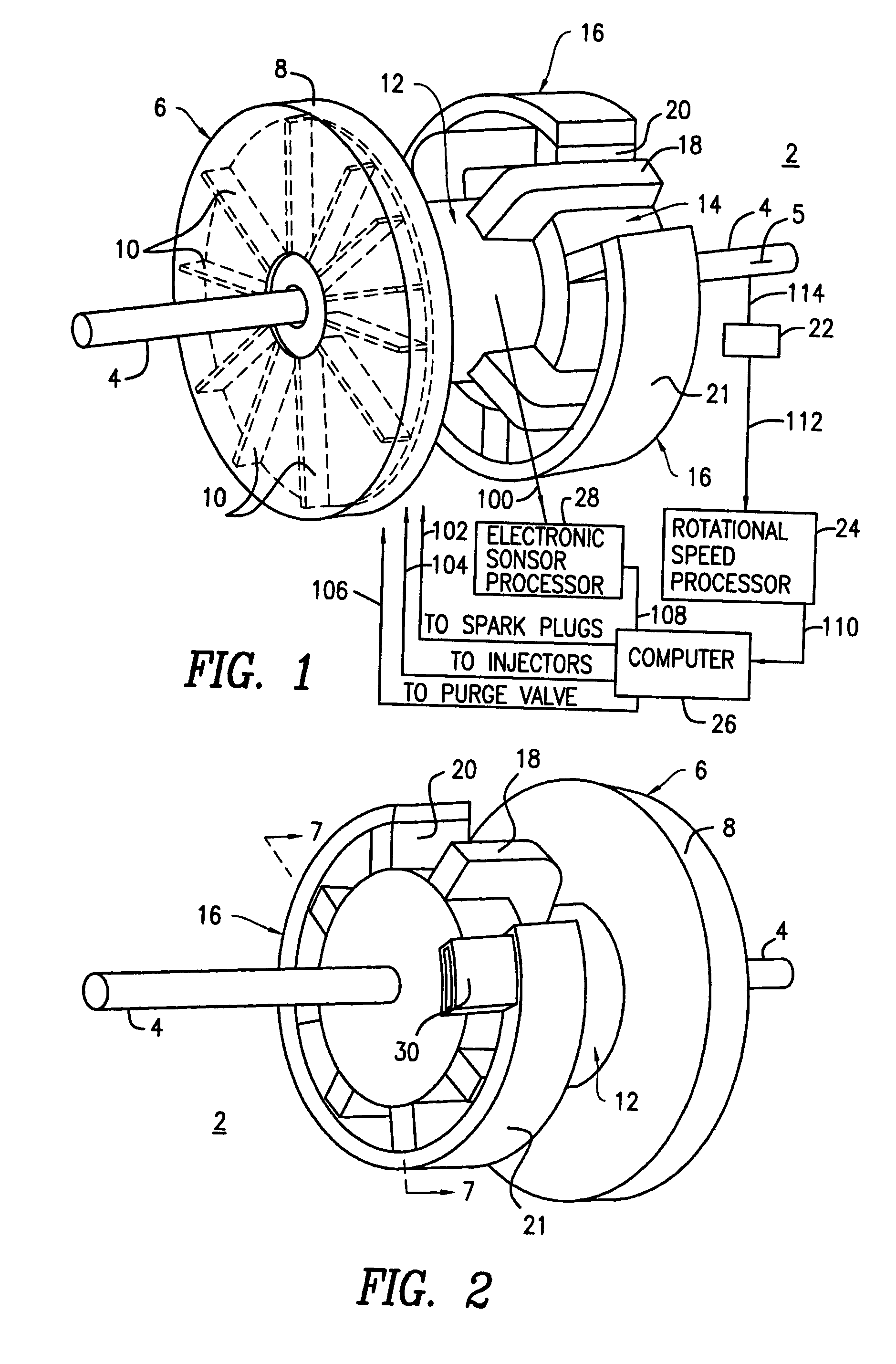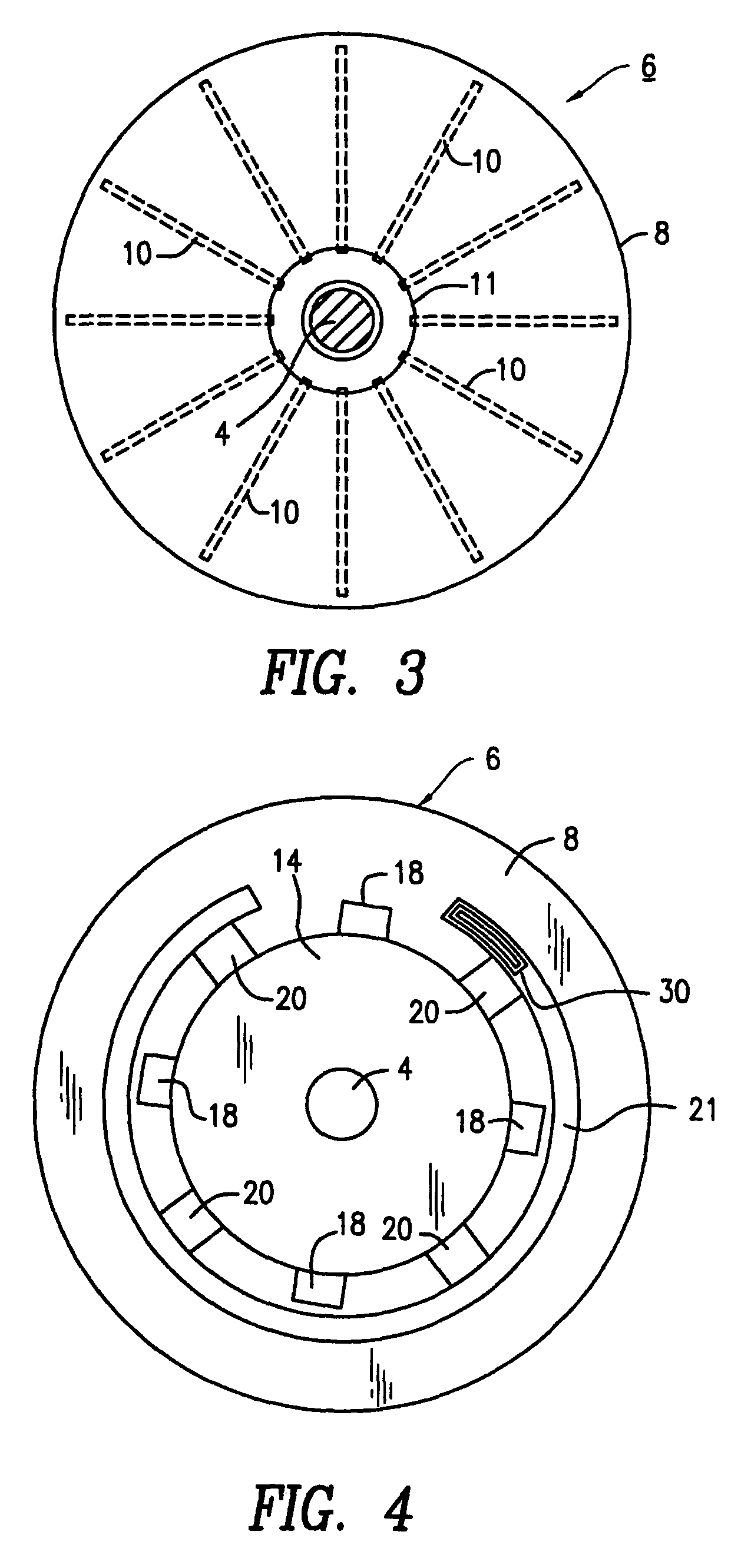High Efficiency rotary piston combustion engine
- Summary
- Abstract
- Description
- Claims
- Application Information
AI Technical Summary
Benefits of technology
Problems solved by technology
Method used
Image
Examples
Embodiment Construction
[0035]A pictorial view of the present rotary engine is shown in FIGS. 1 and 2 for a number of embodiments. More particularly, a drive shaft 4 is common to all portions of the rotary engine 2. The front portion of the engine 2 includes a fan or blower 6 that includes a housing 8 substantially enclosing a plurality of spaced apart impeller or fan blades 10, the latter being rigidly connected to a portion of the drive shaft 4, as will be explained in further detail below. As a result, in this embodiment the fan 6 is mechanically driven by drive shaft 4. However, in an alternative embodiment the fan is driven by an electric motor. The fan 6 is connected coaxially to one end of a combustion chamber 12, the other end of which is connected coaxially to a piston chamber 14, in this example. The piston chamber 14 encloses a rotary piston 15 in which a plurality of spring biased vanes 38 are installed. A manifold assembly 16 includes a plurality of equally spaced apart intake manifolds 18 con...
PUM
 Login to View More
Login to View More Abstract
Description
Claims
Application Information
 Login to View More
Login to View More - R&D
- Intellectual Property
- Life Sciences
- Materials
- Tech Scout
- Unparalleled Data Quality
- Higher Quality Content
- 60% Fewer Hallucinations
Browse by: Latest US Patents, China's latest patents, Technical Efficacy Thesaurus, Application Domain, Technology Topic, Popular Technical Reports.
© 2025 PatSnap. All rights reserved.Legal|Privacy policy|Modern Slavery Act Transparency Statement|Sitemap|About US| Contact US: help@patsnap.com



